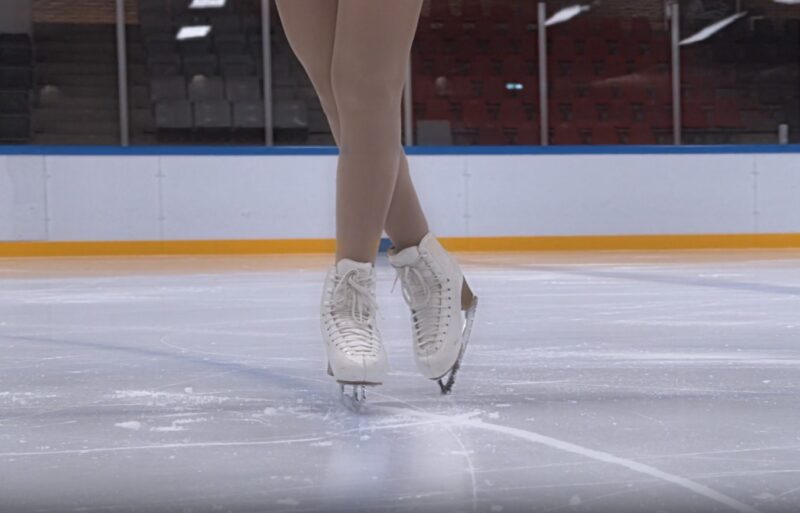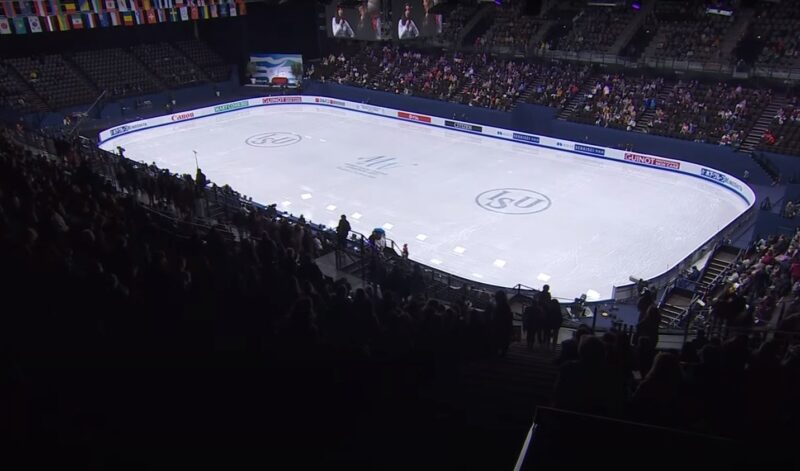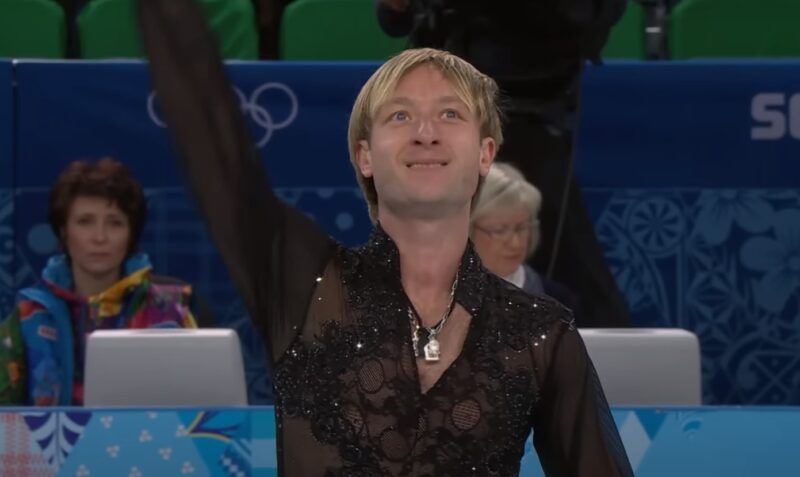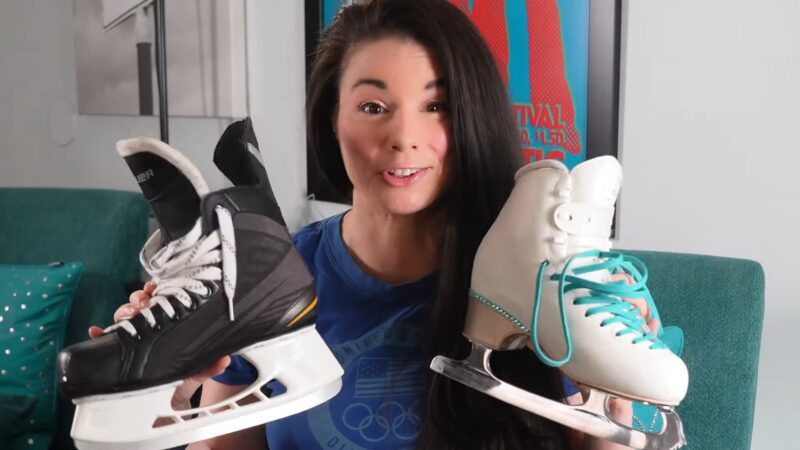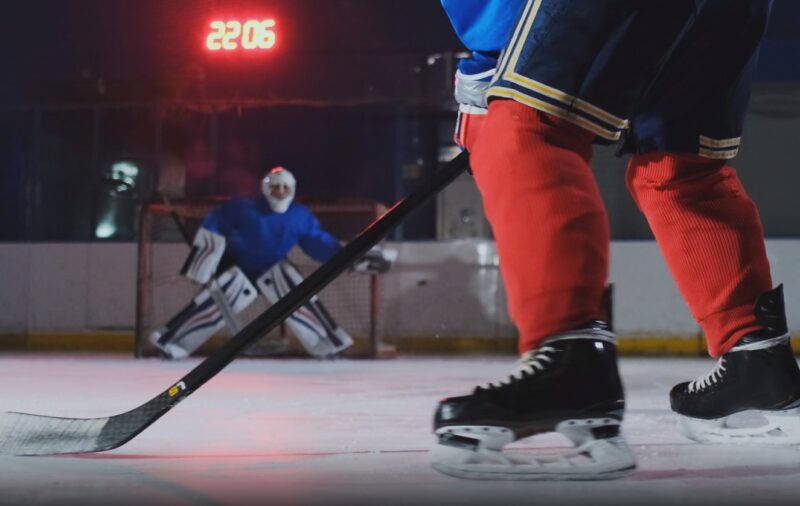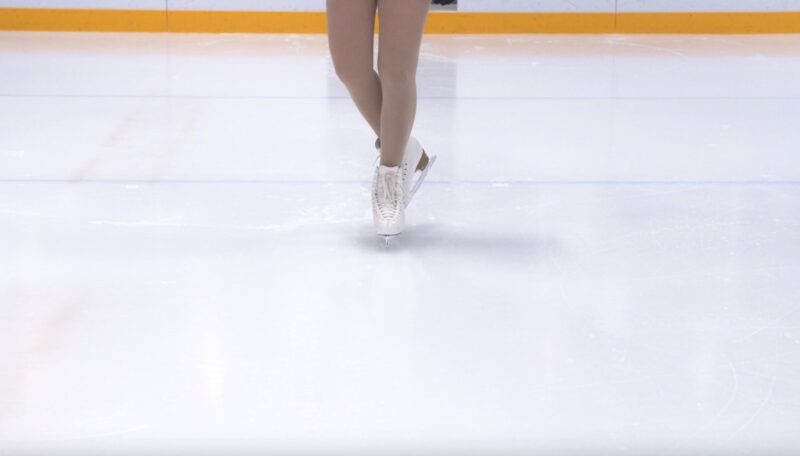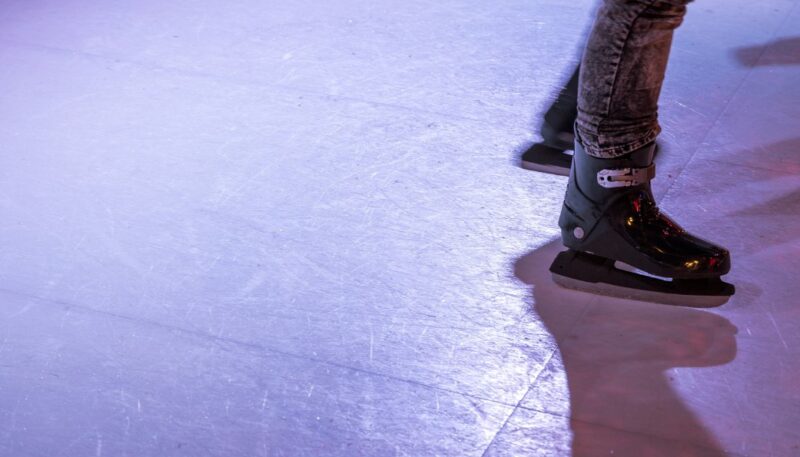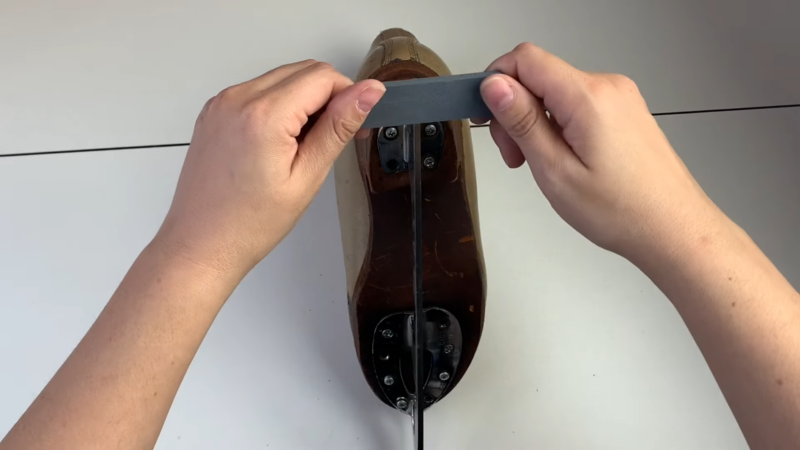
Not many things are as entertaining as skating for the first time. At first, it seems like something you cannot overcome. While it is true that it represents quite a challenge, it is not impossible by any means.
Buying completely new ice skates is a good way to go, but it doesn’t mean you will be free from maintaining them. In fact, sharpening them is something needed from time to time. But how it should be done?
So, tie up your laces, and let’s see how can we do it.
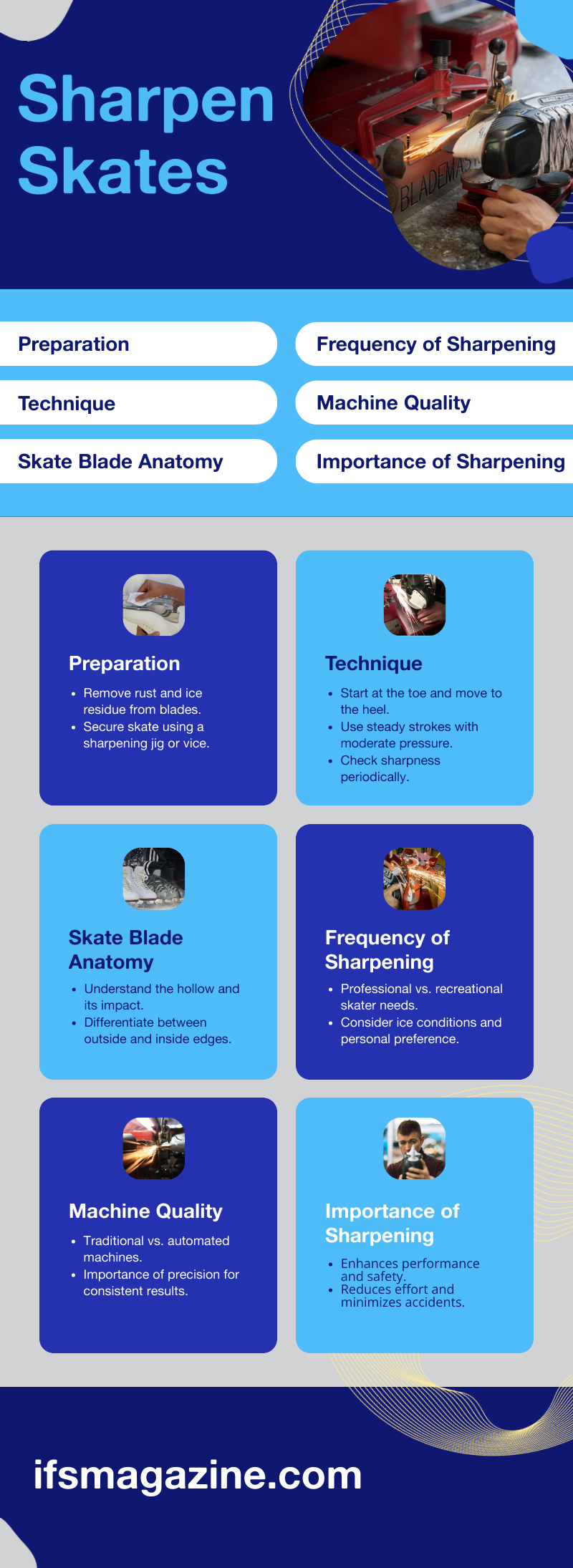
The Sharpening Process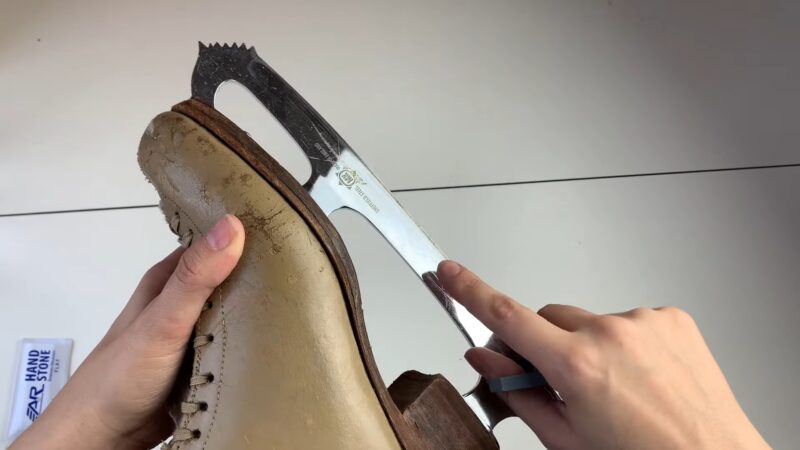
Here’s a step-by-step guide to ensuring your skates are in peak condition.
Preparation
- Before the process starts, ensure the blades are free from rust and ice residue. These elements can hinder the sharpening process and affect the quality of the blade’s edge.
- To ensure precision during the sharpening process, it’s important to secure the skate in a stable position. This can be achieved by using a sharpening jig or a vice.
Choosing the Right Grinding Wheel
- The depth of the hollow ground into the skate blade significantly influences your skating dynamics, including speed, agility, and turning capabilities. Choose a grinding wheel that matches the desired hollow.
- Ensure the grinding wheel is clean and free from defects. A damaged wheel can harm your blades. A clean, defect-free wheel ensures a smooth and consistent sharpening process, reducing the risk of damaging the skate blades.
Technique
- Begin sharpening at the toe end of the skate blade, carefully moving towards the heel.
- Use steady, consistent strokes while sharpening, applying a moderate amount of pressure. It’s important to maintain an even force throughout the stroke to avoid creating uneven edges or altering the blade’s profile.
- After a few strokes, pause to check the sharpness of the blade. This can be done by gently running your fingernail perpendicular to the edge of the blade.
The Anatomy of a Skate Blade
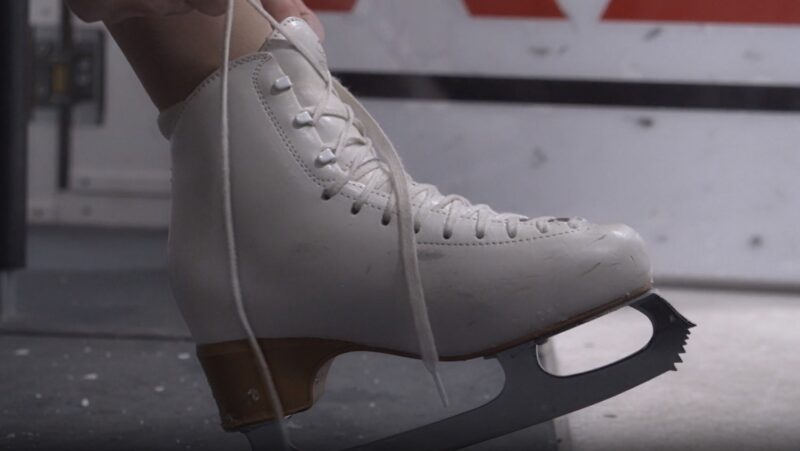
Before diving into the sharpening process, it’s essential to understand the blade’s anatomy, as each part plays a unique role in your skating experience.
The Hollow
The hollow refers to the concave groove that runs through the center of the blade. The depth of the hollow affects your skating style:
- Shallow Hollow (e.g., 1” radius): Provides more blade surface in contact with the ice, resulting in more stability but less agility.
- Deep Hollow (e.g., 3/8” radius): Gives less blade contact, which means more agility and tighter turns but potentially less stability.
Edges
The edges are the two sharp sides of the hollow. They dig into the ice, allowing you to carve turns and stop.
- Outside Edge: It’s the edge on the outer side of the skate. Skaters often use it during turns or spirals.
- Inside Edge: It’s closer to the middle of your foot and is more frequently used, especially during basic maneuvers and straight skating.
How Often Should You Do It?
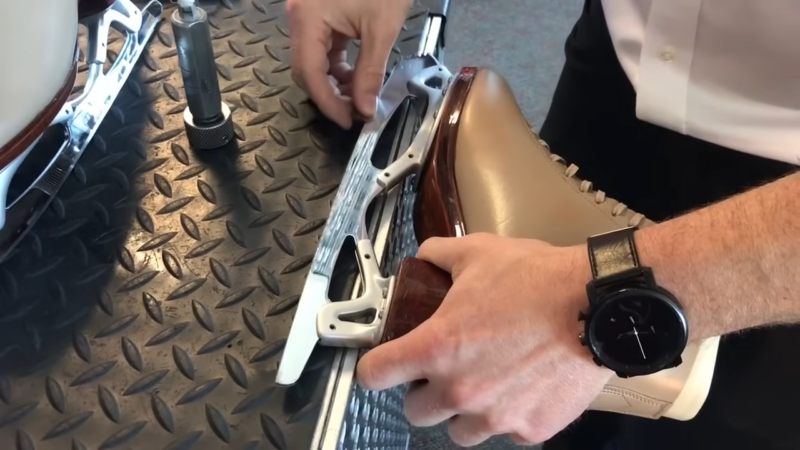
The frequency of sharpening depends on various factors:
- Professional skaters might need to sharpen their skates after every 5-6 hours of use. Recreational skaters can go 15-20 hours between sharpening.
- Rough or outdoor ice can dull blades faster than smooth indoor rinks.
- Some skaters prefer the feel of freshly sharpened blades and opt for more frequent sessions.
Can I Over-sharpen Them?
Yes, over-sharpening is a potential issue for several reasons, but two ones are the most prominent:
- It can reduce the lifespan of your blades.
- Overly sharp blades can make it challenging to glide smoothly and may cause the skates to “bite” into the ice too much.
Are All Sharpening Machines Equal?
Not all machines are created equal:
- While traditional machines are manually operated and require more skill, automated machines can provide consistent results with less human intervention.
- High-quality machines provide better precision and consistency in the process.
Why Sharpening Your Skates is Crucial
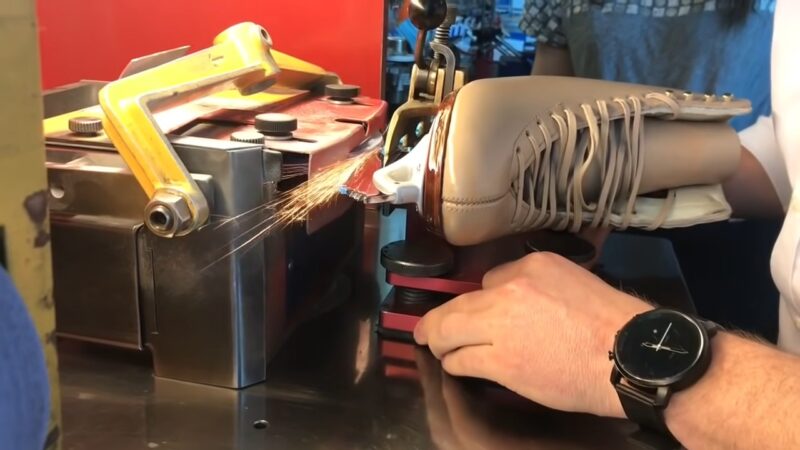
Ice skates are not just shoes with blades. They’re precision instruments, and like any instrument, they need regular maintenance. Proper sharpening ensures optimal performance and safety.
Performance Benefits
- A well-sharpened blade grips the ice better, allowing for quicker turns and faster acceleration.
- Sharp blades offer more accurate control, especially during intricate maneuvers or routines.
- Skating on sharp blades requires less effort, as they glide more smoothly on the ice.
Safety Benefits
- Dull blades are prone to slipping, especially during hard stops or sharp turns.
- With uniformly sharpened blades, skaters can trust their skates to respond predictably to their movements.
- Sharp blades reduce the chances of accidents caused by blades catching on the ice unexpectedly.
Final Thoughts
As you can see, sharpening ice skates is a routine maintenance task. It is a way to ensure quality skating over time, without spending money on purchasing new skates.
Whether you’re maintaining hockey skates or figure skates, the process itself is pretty straightforward, and it doesn’t require too much time to learn how to conduct it properly.
Related Posts:
- Hockey Skates vs. Figure Skates - What is the Difference?
- How Slide Board Exercises Can Transform Your Ice Skating
- How to Create a Home Ice Skating Rink with Synthetic Ice
- What Is Synthetic Ice - From Rinks to Reality
- 10 Best Ice Skating Movies to Watch This Year
- Beginner’s Guide to Ice Skating: 9 Tips to Master…




